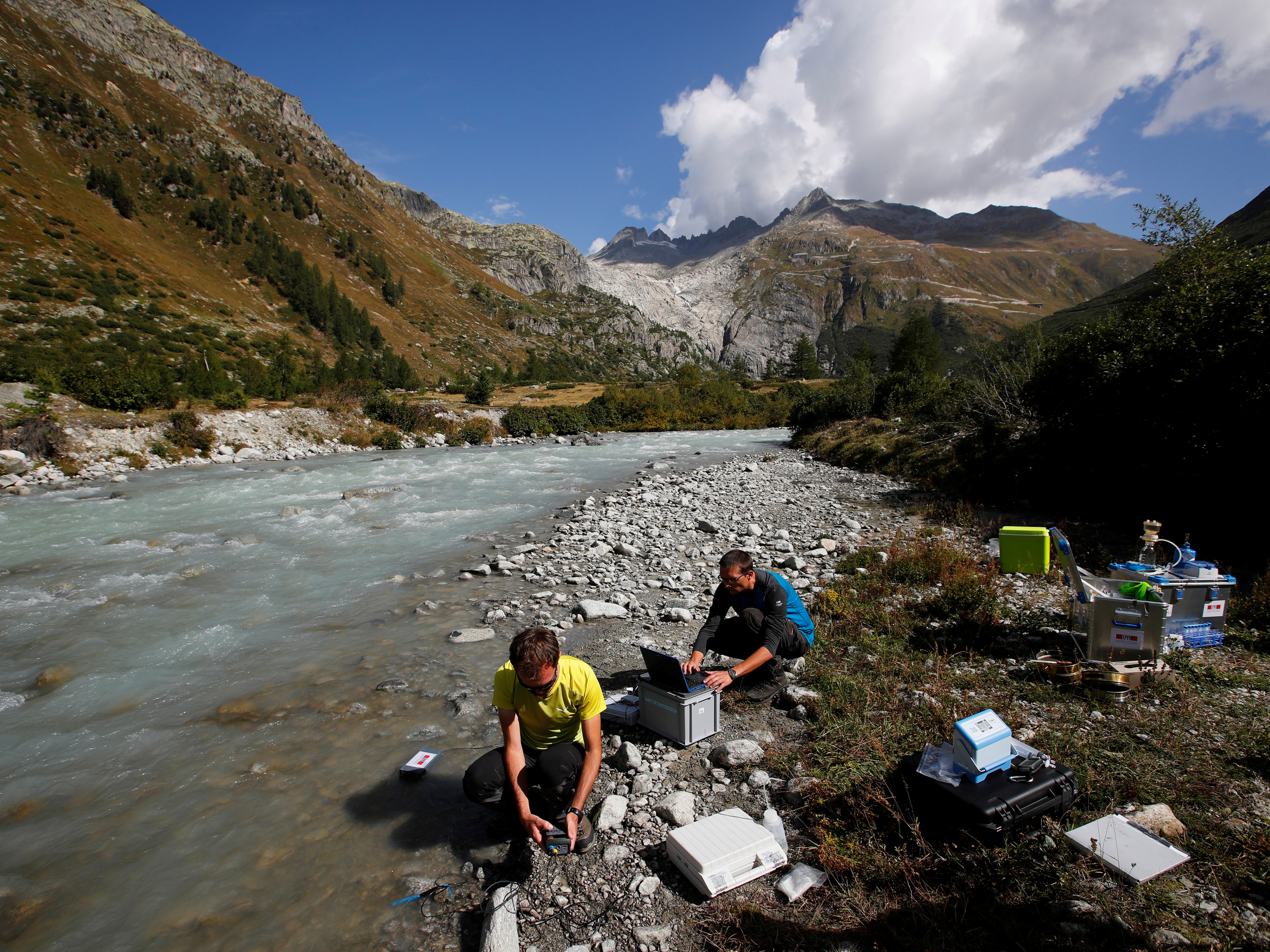The Rhone Glacier, a popular tourist spot in the Swiss Alps, has been shrinking quickly over the last several years.
Glaciers and their streams, which were abundant many years ago, are disappearing due to climate change. According to Reuters, glaciologists say half of the small glaciers in Switzerland, as well as the glacier-fed streams, will be gone in less than 30 years.
To reduce the amount that disappears, nearby residents have been wrapping the glacier in blankets over the past eight summers, Quartz reported. According to Swiss glaciologist David Wolken, the method may be reducing the melting by up to 70%.
Take a look at how the amount of ice on the Rhone Glacier has changed since 2008.
The Rhone Glacier is located in Furka, a mountain pass in Switzerland. The top photo shows what it looks like now. On the bottom, a 2009 photo shows how much ice has vanished in the past nine years.

The top photo shows the amount of ice on the glacier in September 2018, while the bottom image was taken in July 2008.

In addition to covering glaciers with blankets, a Dutch research group has proposed blowing artificial snow across glaciers to help reflect sunlight.

This method could be applied to the Rhone.

Researchers are trying to find out what, in addition to water, is lost when a glacier melts.

Here, Hannes Peter from the Swiss Federal Institute of Technology Lausanne gathers microorganisms from a stream near Rhone Glacier. He wants to study their DNA and figure out how the organisms have adapted to an extreme environment.

According to Reuters, the researchers will examine hundreds of streams at the largest glaciers in the world to collect microorganisms.


